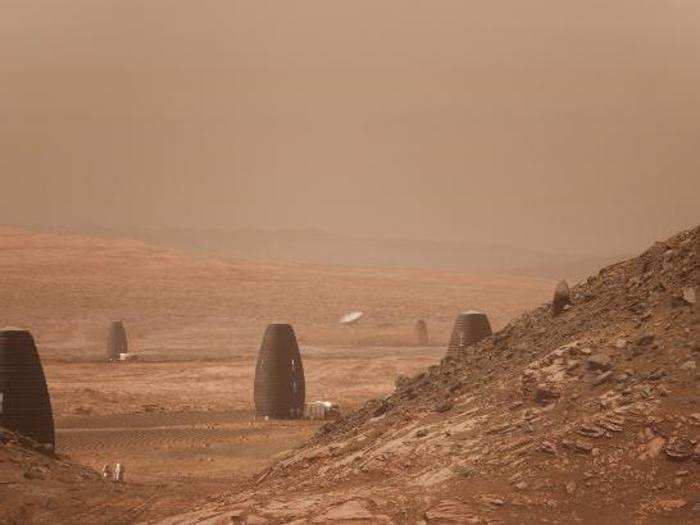
The ideal prototype had to be both strong and lightweight, like an airplane.

The pod windows can shield inhabitants from solar radiation.

The company refers to the prototype as "a tiny bubble of Earth."

The design features a garden, kitchen, and a room for exercise and recreation.

Inhabitants can climb lighted stairs to access each level.

An industrial robot was raised by a forklift to print the 15-foot habitat, which contains around 550 layers of material.

The material, or "Martian polymer," consists of basalt fiber taken from Martian rock and biodegradable plastic made from plants that could theoretically grow on Mars. Most importantly, the formula doesn't require water.

The designs were tested for leakage, durability, and strength.

By printing vertically, the company can keep its industrial robot in one place instead of making it roam across terrain.

The Earth habitat, known as Tera, will launch on Indiegogo as early as September.
"We developed these technologies for space, but they have the potential to transform the way we build on Earth," David Malott, the company's CEO and founder, said in a statement. "By using natural, biodegradable materials grown from crops, we could eliminate the building industry's massive waste."
 A train on the Moon? NASA’s new space tech includes lunar railways, Martian rockets and more
A train on the Moon? NASA’s new space tech includes lunar railways, Martian rockets and more
 Exploring Almora: A guide to the top things to do in 2024
Exploring Almora: A guide to the top things to do in 2024
 6 oil-free snacks you can pack for your office tiffin
6 oil-free snacks you can pack for your office tiffin

Copyright © 2024. Times Internet Limited. All rights reserved.For reprint rights. Times Syndication Service.